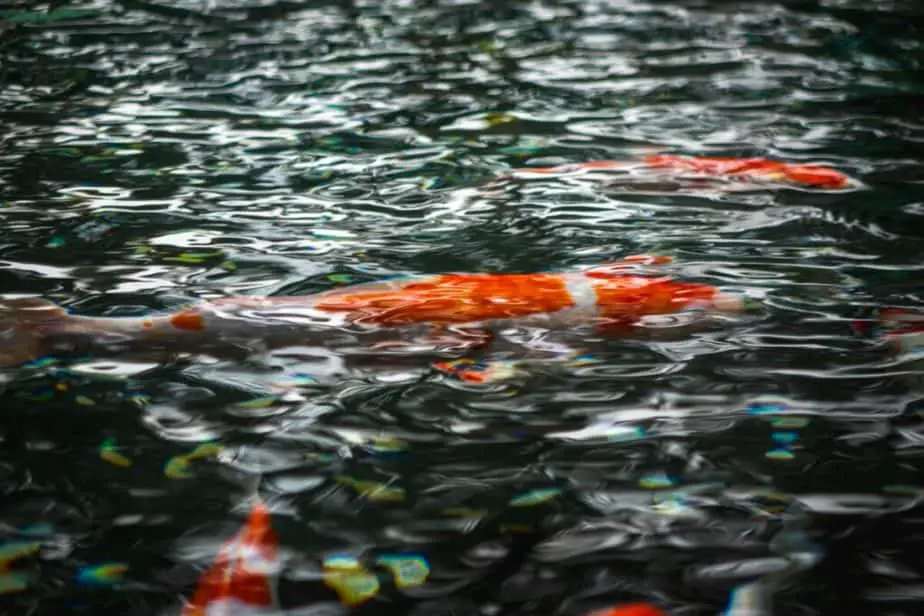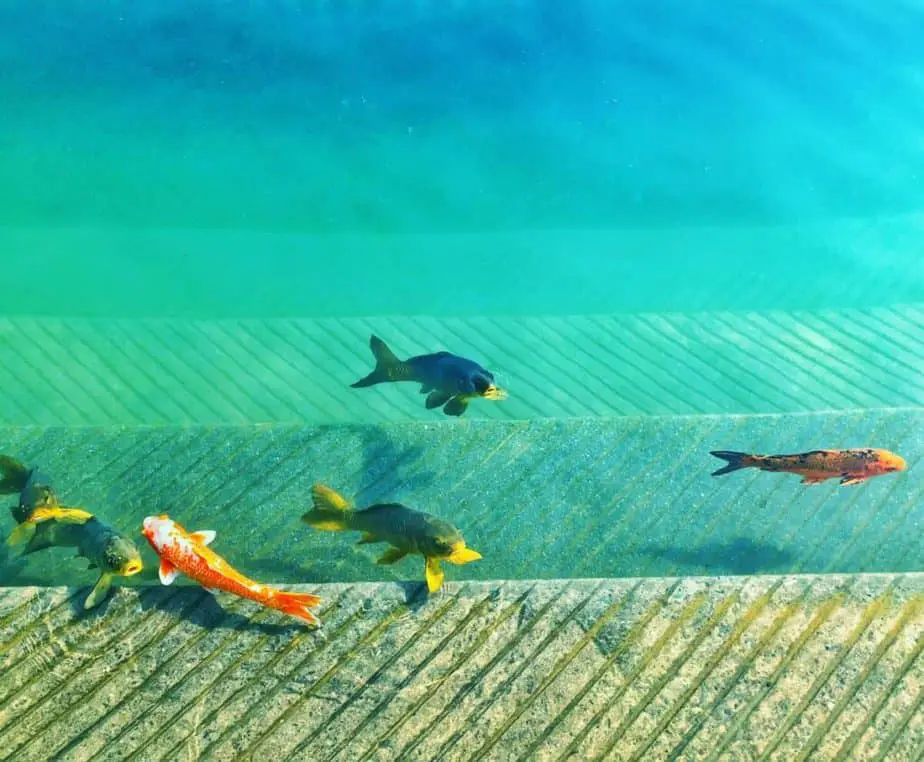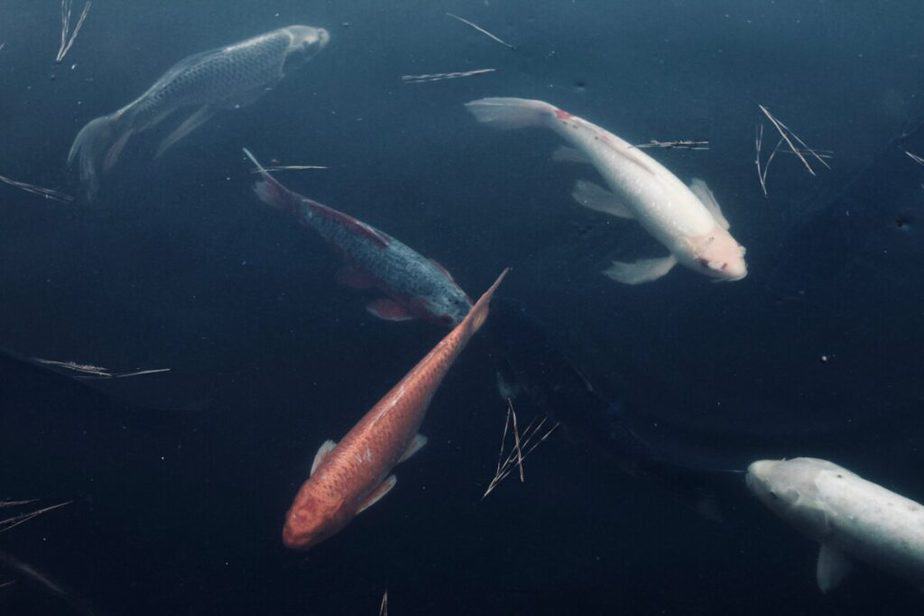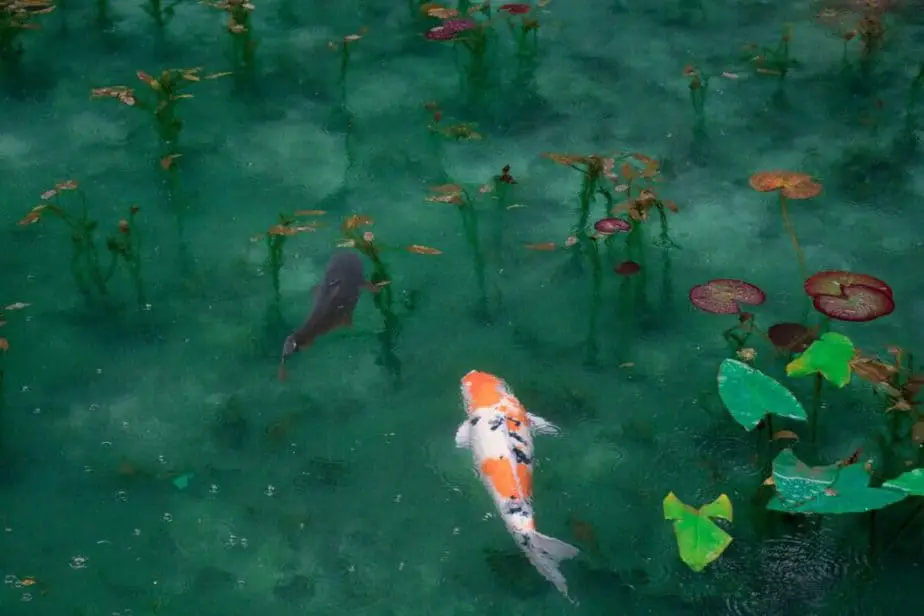Perhaps one of the most unique varieties of fish in the world today would have to be the koi fish. They have a strange and wonderful history, dating back to the 1600’s when they were discovered by Chinese fishermen. This type of Asian carp was almost immediately revered for their unique colors and interesting size.

In the wild, this unique breed of fish can grow to as much as 36 inches in length. They are usually bottom feeders, feasting on plants, algae, or moss.
They also will eat insects, bugs, and disposed human food. Of course, now that we have gotten the introduction of the koi fish out of the way, here is the one question you are probably wondering: can you fish for these koi? Surely it would be an interesting challenge, so why not try it? The answer to that question is yes, in most cases you can, indeed, fish for koi. However, you need to do your homework a little bit first.
At the time, the main colors of this fish were red, blue, white, and black. It wasn’t long before they became well-known throughout Asia, and they caught the eye of several Japanese individuals, who began breeding the species on a larger scale and eventually making koi with wonderful rainbow colors.
In the early 1900s there were many other countries that began breeding this species as well. Various European countries as well as the United States and the United Kingdom began a large-scale breeding operation of this fish, and it wasn’t long before they became very popular indeed.
The 1920s and 30s saw a boom in the production of koi fish that even a century later hasn’t really stopped. The unique look of these fish definitely gives them a lot of appeal, and that is probably part of the reason why many private individuals and well-off businessmen started breeding them to be in their home aquariums or private ponds.
Moreover, these fish are not considered native to North America. However, they have been bred so long that there are now quite a few areas where they have been spotted in the wild. The US states of Arizona and Texas in particular have large populations, and there was even one report where there were over a hundred koi together at the same time in various locations in Colorado.
How did these koi fish get to where they are now? The answer to that question is not very clear. However, some say that these koi might simply have been dumped into the water by a fish owner who had grown tired of them. Of course, it doesn’t necessarily matter how they got into the water, they continue to increase in number.

Where is it legal to fish for koi?
The first baby step you have to take before you can hold up one of those kois for your congratulatory picture is to make sure that you stay within the law while you are fishing for them. There is good news and bad news here. First of all, let’s get the bad news out of the way first: If you live in Maine, you cannot fish for koi. In that state, it is illegal to buy, sell, own, or even simply maintain that breed of fish within any jurisdiction within the state of Maine. The good news is that for the rest of the United States, there is absolutely nothing unlawful about fishing for koi. In fact, there are even a number of states that will allow public ponds to hold private fishing tournaments that are mostly devoted to fishing for koi.
How do I fish for koi in the first place?
Of course, this all is probably begging yet another question for you, which is, “how do I even start to fish for koi?” Well, a good rule of thumb is to remember that koi are a member of the carp family, and so you should employ strategies that are similar to fishing for other types of carp. Consider the following:
Use a clear line.
With koi you should always remember to use a very clear line simply because the koi tends to be a very smart fish. Like their carp cousins, they actually can discern a fishing line if it is colored and that will spook them and make them run away. Of course, you can use a braided line if you want lightweight material, just remember that there needs to be a fluorocarbon or other clear type of leader on it if you want the koi to bite.

Use a light line.
You also should consider using a light line for koi fishing, simply because it will give you the best chance to feel the tug on your line when a koi finally strikes. Like other carp, koi have a tendency to just slurp on the line and it can be very difficult to feel the bite unless you are an experienced hand. Additionally, having a light line will allow you to cast your small bait much further out than normal.
Even if you manage to land a larger koi, like all other members of the carp family they do tend to have a smaller mouth. If you are fishing for smaller koi, you can probably get away with just using a line that is six pounds or under. However, for larger koi you should try your luck with a line that is larger than 12 pounds.
Remember that koi tend to be very skittish in general.
Much like carp, koi are definitely a very skittish lot. They have a tendency to be very nervous when they see humans. However, one of the main ways that you can get koi to play ball with you would be through either a leading technique or a drag and drop method with your bait. These methods have a proven track record of success throughout the years.
Moreover, you should also strongly consider asking around about the particular fishing spot that the koi are swimming around in. To be perfectly frank, if you are told that the koi used to be family pets, then there’s a possibility they might be more used to humans and not as skittish. However, unless you have an experienced guide, always error on the side of caution and just presume the koi will be skittish.
What bait should I use for catching koi?
Of course, the other wrinkle you should consider is in finding the best bait for finding your koi. While we have determined that it is perfectly legal to catch koi in most jurisdictions, we still need to determine what these little critters will go after. Moreover, understanding their behavior or the type of line they might require would be valueless as well if we don’t have a full understanding of the bait. Thus, you should keep the following in mind:

Are you fishing for koi in an area that gets a lot of foot traffic?
If the fishing spot you have chosen gets a lot of human visitors, then you should use this to your advantage. Just think about it from the fish’s perspective. A koi that gets a lot of human visitors will become accustomed to feeding off the scraps of food that a human will either let carelessly slip into the water or feed them intentionally.
What does this mean to you, as an individual who is intentionally trying to catch a koi fish? Well, it’s pretty much self-explanatory: when it comes to catching koi you can use pretty much anything you want for bait. Thus, items such as bread flies and pellet flies are something that you definitely should keep continually stocked in your tackle box if you are going to start a collection of pictures of you holding up your latest koi catch!
Think the way that the koi think.
When it comes to bait, you often have to get in the mind of the koi in order to find an effective source of bait. For example, you should remember that koi just LOVE spoiled human food, hence the reason why they are so easy to catch in places that get a lot of foot traffic.
Thus, one of the things you can do would be to get some corn tortillas and let them lay out in the sun for a few days. Once they get their corners a bit bent-up, then you can cut them in half and then use them as koi bait when you go fishing. However, this does beg yet another question: what do you do if the koi do not respond to the bait?
Well, in that case, you would need to do something to get the koi accustomed to the bait that you are using. Let’s take using bread as bait, for example. If the koi do not seem to like bread, then you should simply take a few days where all you do is just FEED THEM. Simply enjoy the pond and just throw some bread crumbs in the water and watch the koi get used to it.
If they do show some interest, then after a few days you can proceed with using the bread as bait on your fishing hook. Additionally, you could simply try just tossing a few pieces of bread in the water and then try to fish the koi with a cast net. Many fishermen have even had trouble picking the net up after using this method!
Finally, you should realize that, like other fish, the koi will definitely respond to the changing seasons. When the temperatures drop, it is going to be much more different to catch this species simply because they just don’t eat very much during the colder months.
Again, this is another situation where proper preparation is the key to a successful fishing experience. If you are going to fish for koi for any length of time, you really would do well to invest in a good pond thermometer. Additionally, if the water is cold, that doesn’t necessarily mean that the koi won’t bite; however, it does mean that you will need to be more persistent in order to allow for their slower metabolisms.
Don’t forget that koi are bottom feeders.
Like catfish and many other species, koi are also bottom feeders. That means that they have a tendency to feed off the bottom of the river or stream they are in. Thus, when you are trying different baits, you would do well to consider a bait that bottom feeders like.
Baits such as bucktail jigs, live insects, spinners, and anything that might cause a dragging motion on the sand are all good options that you can use to try to land a koi.
Along these same lines, you also could utilize various other leading techniques or you could employ the use of moss flies, algae flies, glo bug areas, or pellet flies. Even many beginning koi fishermen have found luck with some of these strategies.
Don’t be afraid to try many different approaches in your attempts to catch koi.
In conclusion, if you’re ready for a challenge, you definitely will find it if you attempt to fish for koi. There is no question that they are definitely a finicky being; one day, you might not be able to keep them out of your net or off your line at all, but the next day, you might be lucky to get a nibble at all.
Don’t be afraid to be persistent with attempting to catch these creatures. Moreover, if you hear of a new strategy for catching this strange new breed of fish, you shouldn’t be afraid to try it out. They wouldn’t be discussing these koi fishing strategies if they didn’t work well for them.
In conclusion, there is definitely always a need in fishing to “push the envelope” and try to find new things to fish for. What better way to establish some new bragging rights than by fishing for koi? Considering how much of a challenge catching this fish can be, it will make you feel that much better when you are holding up your prize and posing for that picture!


One thought on “Can You Fish For Koi?”